Physical Address
304 North Cardinal St.
Dorchester Center, MA 02124
Physical Address
304 North Cardinal St.
Dorchester Center, MA 02124
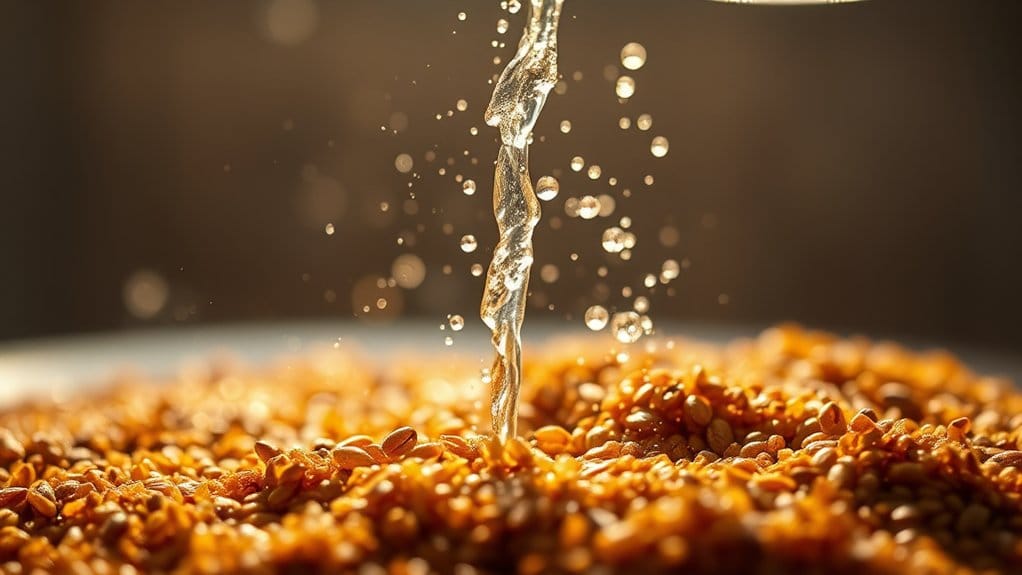
Light roasts shine during brewing since they bring out bright, fruity flavors that sway in your cup. When you master the right techniques, like using the perfect grind size and brewing temperature, those delicious notes really pop. Pour-over methods unlock their potential, making each sip a lively experience. Plus, a good coffee-to-water ratio spices things up! Curious about what else makes the magic happen? Stick around, and you’ll uncover even more brewing secrets!
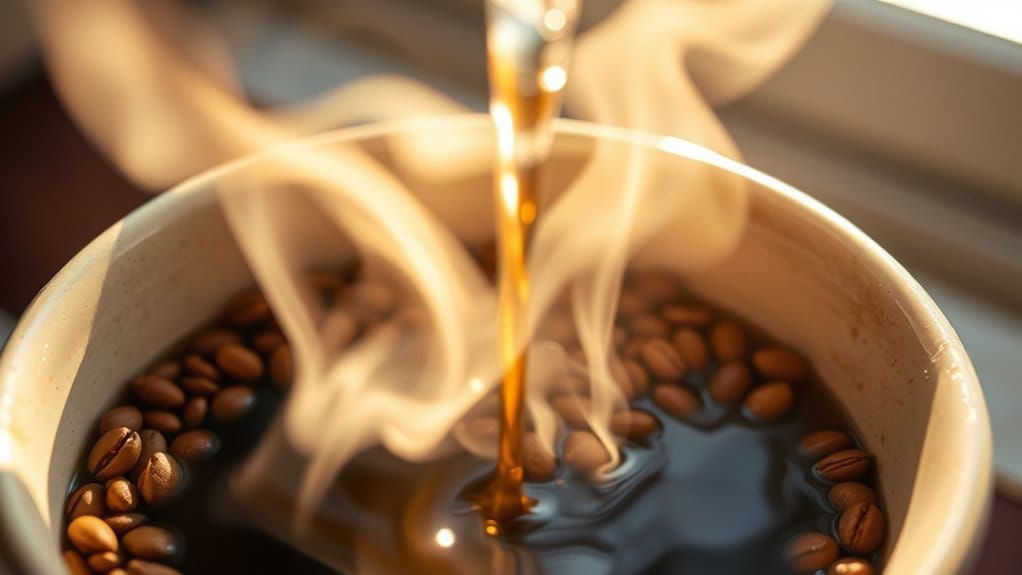
Light roasts are like a warm hug for your taste buds! They keep the original flavors, meaning you get to enjoy bright, fruity notes that sway on your palate.
As the roasting ends just after the first crack, those delicious aromas stay intact. You’ll notice that light roasts are dry and light brown, with no oily sheen. This unique roasting furthermore means they pack a bit more caffeine than dark roasts. The lively acidity makes every sip feel crisp and invigorating, like a sunny morning. Light roasts retain slightly more caffeine by weight due to their shorter roasting time, making them an excellent choice for a caffeine boost. This delicate process preserves the unique original flavors of the coffee beans, enhancing the overall tasting experience. Additionally, using a proper grinder ensures that the extraction process maximizes these delightful characteristics.
Imagine sipping a cup that reminds you of berries and citrus! Isn’t that inviting? So, immerse yourself and let your taste buds enjoy this delightful coffee experience!
Brewing that perfect cup of coffee is all about getting it just right. For light roasts, the sweet spot lies between 195°F and 205°F. This temperature range helps extract those delightful flavors without making your brew taste bitter.
Think of it like a cozy hug for your beans! If you go too hot, you might end up with a flavor that’s harsher than a Monday morning. Too cool, and your coffee could taste like it’s still snoozing. Remember, different brewing methods may need slight tweaks in temperature. Pour-over lovers can get fancy with precise adjustments, whereas other methods may require a bit of experimenting.
Additionally, maintaining water quality ensures that the flavors shine through as well, complementing the effects of proper temperature control. Using water with a balance of TDS and minerals can greatly enhance your brew’s flavor profile. In the end, you’re the maestro of your coffee orchestra—play with those temperatures and enjoy the show!
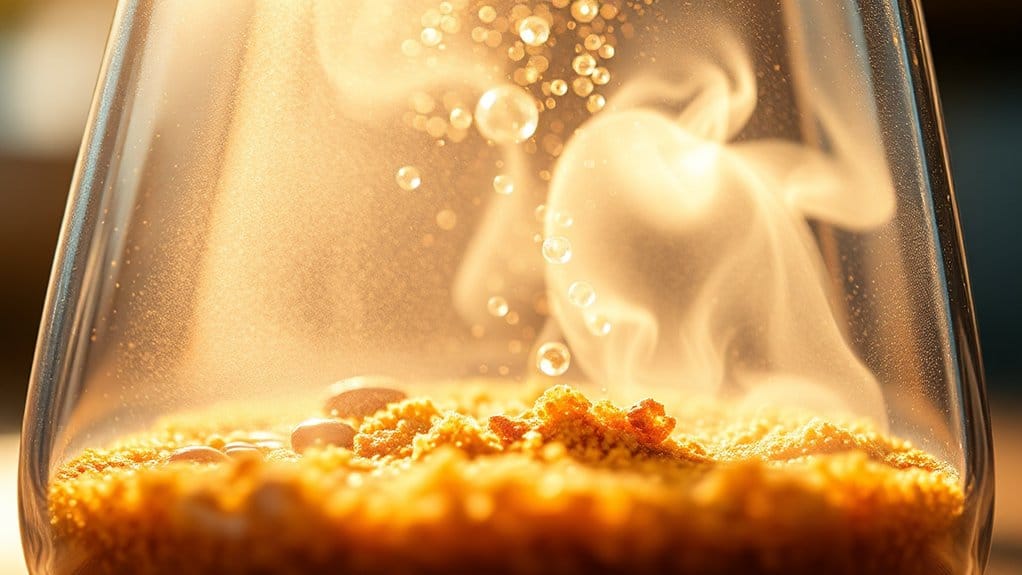
When you’re aiming for that perfect cup, the grind size of your coffee beans can make all the difference. For light roasts, a medium to medium-fine grind is what you need.
Why’s that? These lively beans have higher water content, so finer grinds pull out those delicate floral and citrus notes beautifully. Understanding grind size impact is essential for maximizing extraction and highlighting the unique flavor profile of light roasts.
If you’re brewing with a pour-over or Chemex, adjusting your grind size is crucial! A medium-fine grind gives a lovely balance, whereas a coarser grind can leave you with muted flavors.
Finding the right coffee-to-water ratio can truly improve your coffee experience. A common starting point is the 1:17 ratio, using one gram of coffee for every 17 grams of water. This balance helps bring out delicate flavors.
For light roasts, consider starting between 1:15 and 1:17, adjusting as needed based on taste. Pour-over methods typically fit in the 1:15 to 1:18 range, whereas immersion methods, like French press, use a bit more coffee, around 1:15 to 1:16. Additionally, accurate measurement of coffee ensures a delightful brew tailored to your taste preferences.
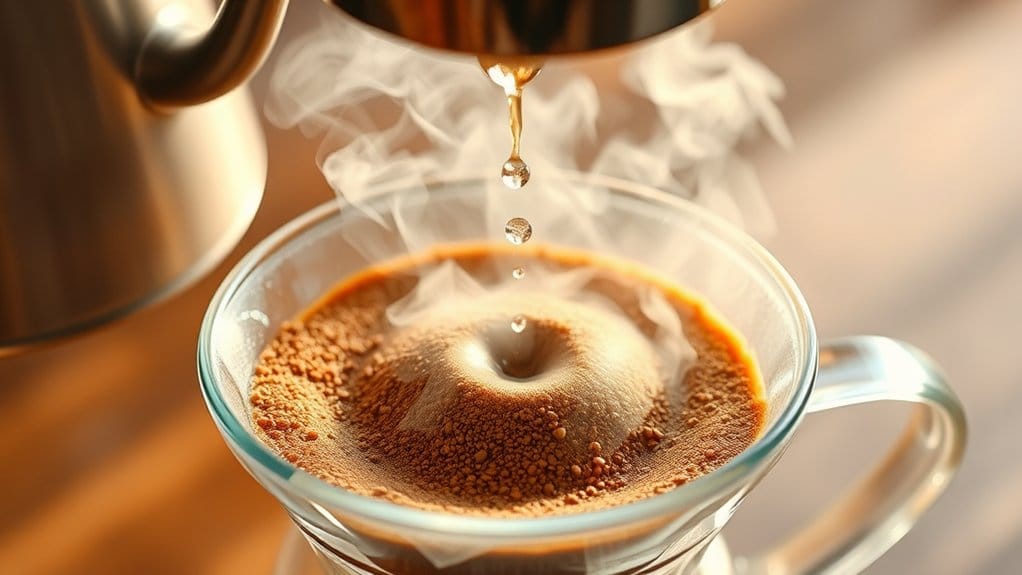
Have you ever wondered why pour-over coffee has such a distinct flavor? It’s all about technique and equipment!
First, you’ll need a reliable drip brewer, like a Blue Bottle drip or a classic Chemex. Don’t forget your paper filters to create that smooth cup. Heating water to around 205°F is key, so grab a trusty kettle.
Start by grinding your beans to a medium-fine size. Pour water in spirals over the grounds during the bloom phase. This pre-infuses the coffee, releasing delightful aromas.
Control your brew time, usually between 2 to 3 minutes, for the best taste. With each sip, you savor the bright acidity and complex nuances of those lovely light roasts! Proper filtration systems ensure optimal water chemistry, enhancing your brewing experience. Isn’t brewing fun?
Achieving even extraction during your brewing process can make a world of difference in flavor. Start by using a burr grinder to get a consistent grind size. Remember, finer grinds for light roasts help unlock those complex tastes.
Next, pay attention to water temperature—keep it between 200-205°F for the best results. Think of it like a cozy hug for your coffee!
Also, try a coffee-to-water ratio around 1:15 to 1:17; it’s a sweet spot that balances strength and flavors.
Don’t forget to time your brewing, too—3-4 minutes for pour-overs works wonders. Finally, when pouring, use a gooseneck kettle for control and don’t be afraid to swirl things around. Your taste buds will thank you! Additionally, ensuring the right grind size is crucial for avoiding over-extraction and achieving a delightful cup.
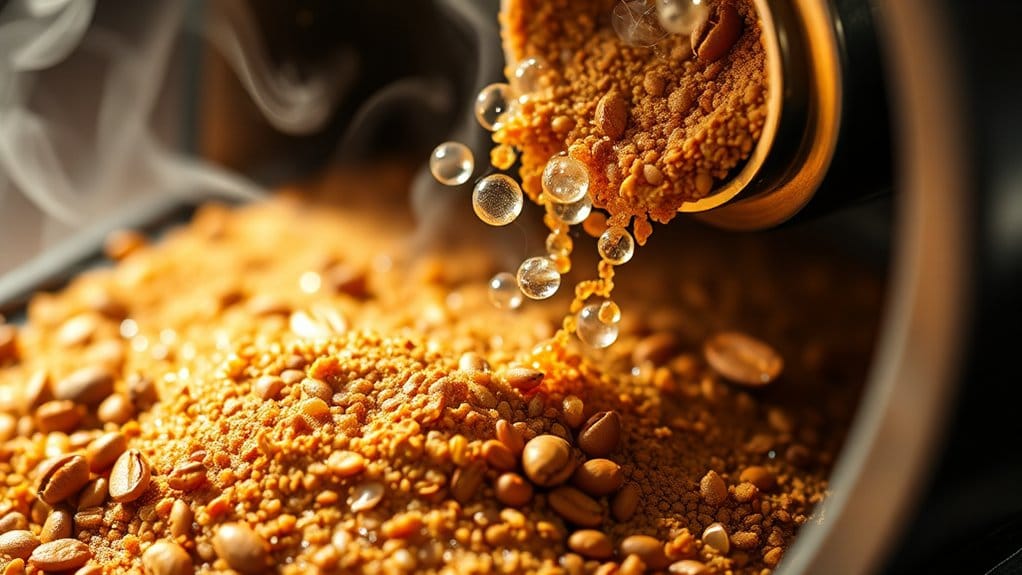
Freshly roasted beans burst with lively aromatic compounds and dynamic flavors, essential for that delightful acidity you love. But if your beans have been hanging around for too long, they can start to lose their zing. After just a few weeks, those fruity, floral notes may fade, giving you a flat cup. Make certain to store your beans in an airtight container, away from light and dampness. You want to keep them fresh! Additionally, consider using amber glass jars to protect your beans from light exposure, which can lead to rancidification of coffee oils.
In regards to brewing light roasts, focusing on time is key to unlocking their lively flavors. Too short, and you’ll taste sourness; too long, and bitterness creeps in.
Each brewing method, whether it’s Pour-Over, French Press, or even a trusty Drip Coffee Maker, has its sweet spot for brewing time.
For a Pour-Over like the Hario V60, aim for 2.5 to 3.5 minutes. Using a French Press? Stick to 4 minutes. Longing for espresso? Lighter roasts love a 30-40 second brew.
Remember, adjustments of just 10-30 seconds can enhance your coffee, transforming it from ordinary to extraordinary! Additionally, using the correct coffee-to-water ratio is essential for achieving the optimal flavor extraction during brewing.
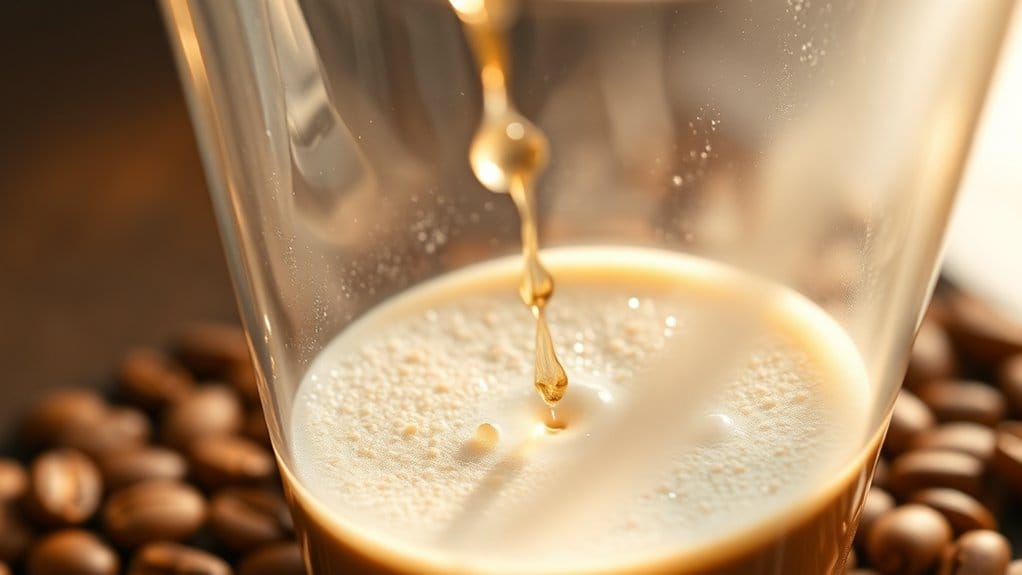
Using filtered water can make a noticeable difference in your coffee experience. It helps guarantee a balanced brew, showcasing those delightful light roast flavors. Filtering out chlorine and excess minerals means your cup won’t taste bitter or muddy.
Instead, you get a smooth, rich sip that lets the beans shine. Imagine savoring that bright acidity and unique origin notes without any off-flavors!
Plus, filtered water isn’t just about taste; it’s good for your equipment too. It prevents limescale buildup, extending your coffee maker’s lifespan.
You’ll spend less time cleaning and more time enjoying your perfect brew. So, why not treat your taste buds and your machine? Everyone deserves a great cup of coffee, right?
Pour-over methods, like Chemex, are wonderful for showcasing light roast brightness. You can additionally play with brew temperature, aiming for around 203°F to 212°F. Remember, the right grind size is key: fine for strong brews, coarser for gentler cups. Consistent pour rate during brewing is crucial for balanced extraction, so enjoy the process!
East African origins like Ethiopia and Kenya shine in light roasts, offering lively floral and berry notes. Central American coffees, especially from Guatemala, improve brightness and sweetness, which perfectly complements your brewing experience.
When comparing caffeine content, you’ll find light roasts can have slightly more caffeine per scoop because of their density. Nevertheless, the overall difference is negligible when measured accurately by weight rather than volume.
Light roasts are gaining popularity due to you’re drawn to their complex flavors and lively acidity. Younger coffee drinkers prefer unique, adventurous experiences, aligning with the increasing focus on sustainability and ethically sourced products in recent years.
Your brewing method directly impacts acidity. Pour-over brewing improves brightness and clarity through controlled saturation, whereas immersion methods may mute it. Experimenting with temperature and extraction time helps you balance acidity to your taste preference.
The age of your beans greatly impacts flavor. Freshly roasted beans offer lively tastes, whereas older beans risk losing acidity and complexity. Proper aging guarantees ideal extraction, so give your coffee the time it needs before brewing.